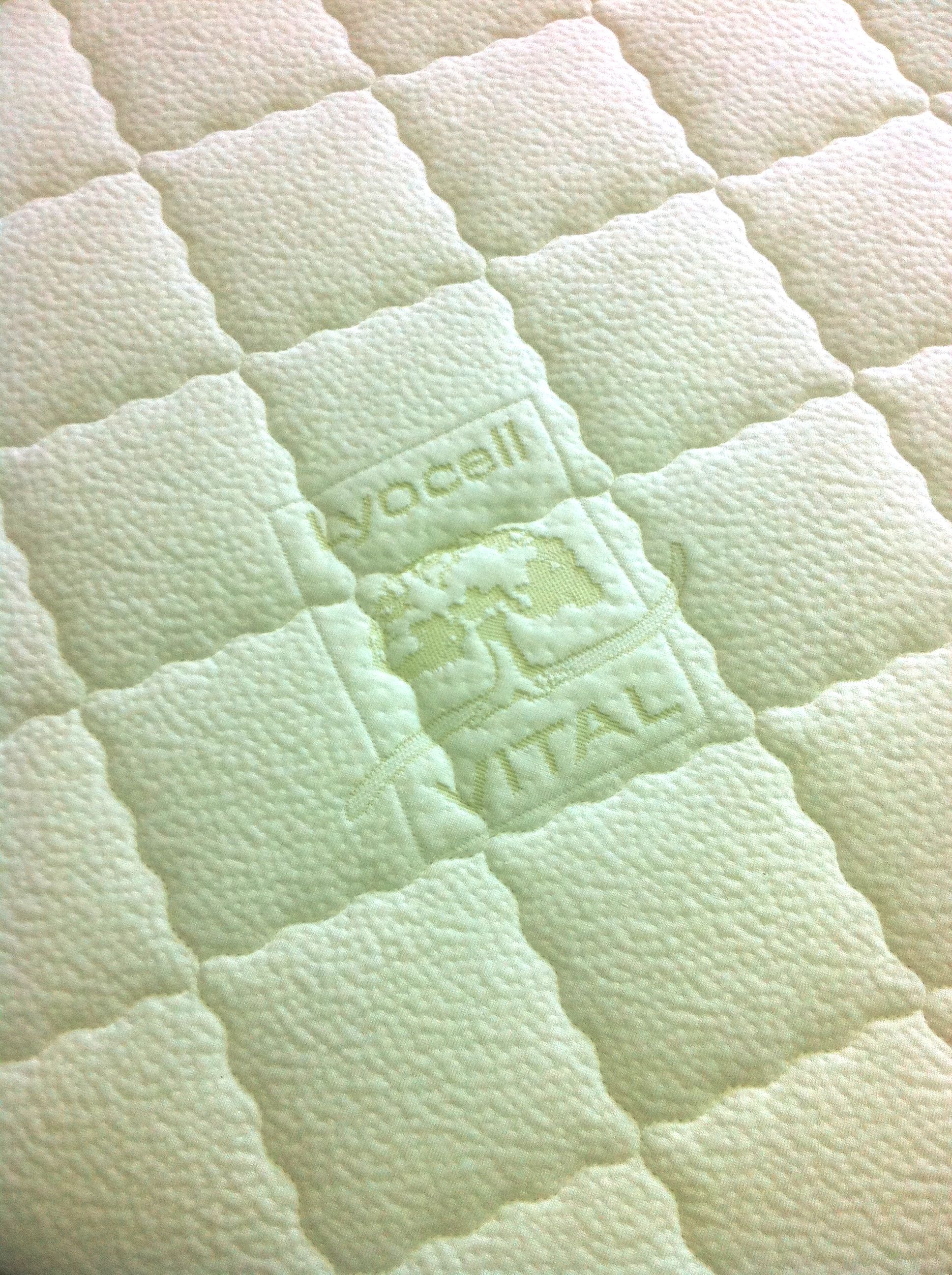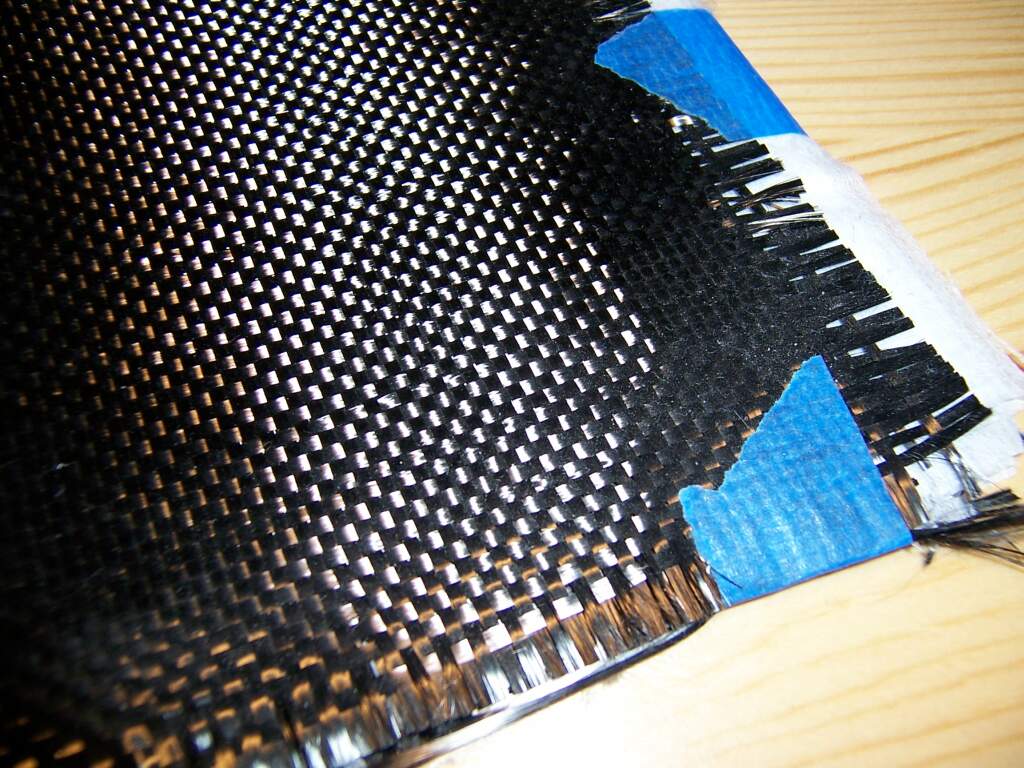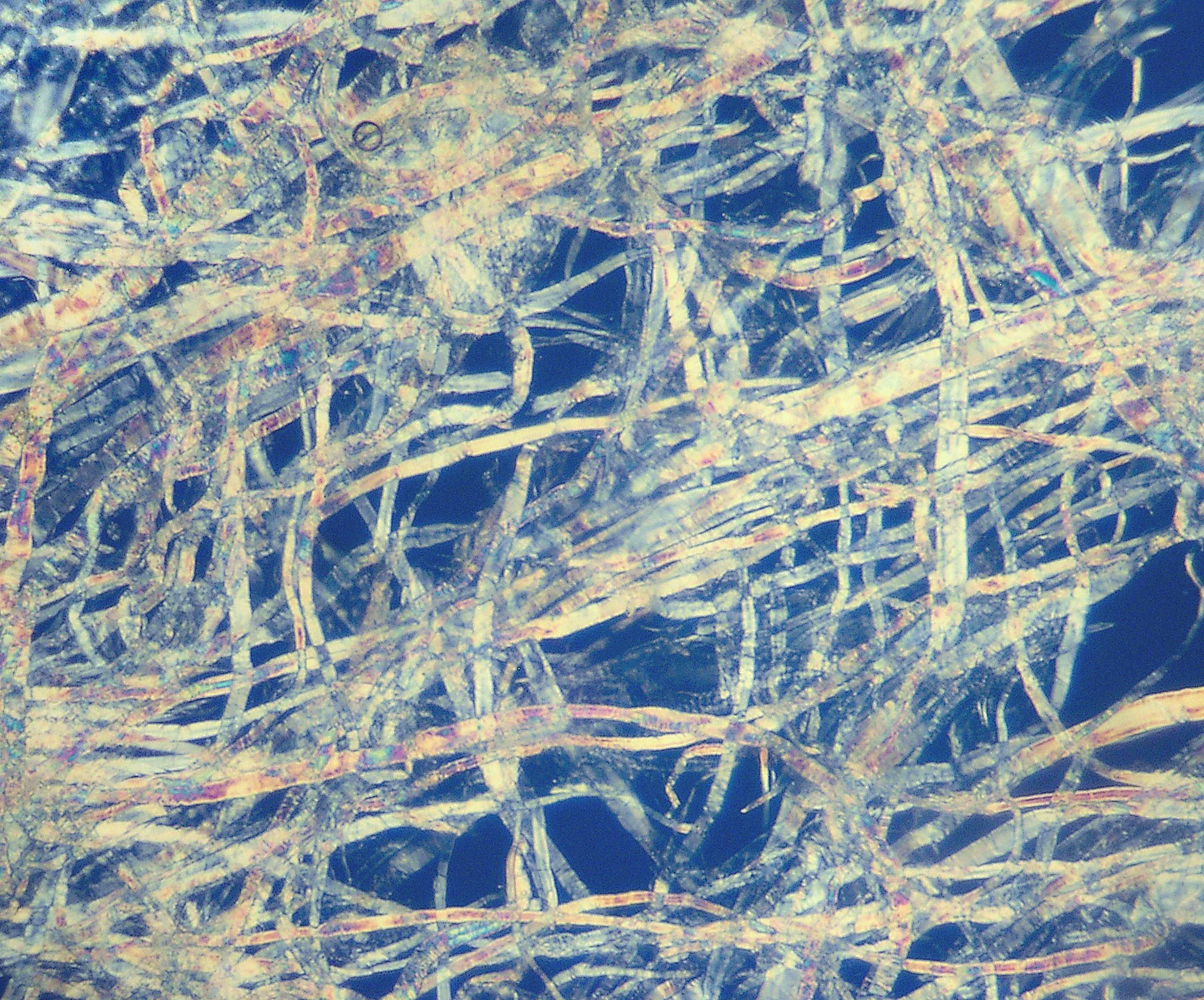|
Rayon
Rayon, also called viscose and commercialised in some countries as sabra silk or cactus silk, is a semi-synthetic fiber made from natural sources of regenerated cellulose fiber, cellulose, such as wood and related agricultural products. It has the same molecular structure as cellulose. Many types and grades of viscose fibers and films exist. Some imitate the feel and texture of natural fibers such as silk, wool, cotton, and linen. The types that resemble silk are often called artificial silk. It can be woven or knit to make textiles for clothing and other purposes. Rayon production involves solubilizing cellulose to allow turning the fibers into required form. Three common solubilization methods are: * The Cuprammonium rayon, cuprammonium process (not in use today), using ammoniacal solutions of copper salts * The viscose process, the most common today, using alkali and carbon disulfide * The Lyocell process, using amine oxide, avoids producing neurotoxic carbon disulfide but is ... [...More Info...] [...Related Items...] OR: [Wikipedia] [Google] [Baidu] |
Carbon Disulfide
Carbon disulfide (also spelled as carbon disulphide) is an inorganic compound with the chemical formula and structure . It is also considered as the anhydride of thiocarbonic acid. It is a colorless, flammable, neurotoxic liquid that is used as a building block in organic synthesis. Pure carbon disulfide has a pleasant, ether- or chloroform-like odor, but commercial samples are usually yellowish and are typically contaminated with foul-smelling impurities.. History In 1796, the German chemist Wilhelm August Lampadius (1772–1842) first prepared carbon disulfide by heating pyrite with moist charcoal. He called it "liquid sulfur" (''flüssig Schwefel''). The composition of carbon disulfide was finally determined in 1813 by the team of the Swedish chemist Jöns Jacob Berzelius (1779–1848) and the Swiss-British chemist Alexander Marcet (1770–1822). Their analysis was consistent with an empirical formula of CS2. Occurrence, manufacture, properties Small amounts of carbon ... [...More Info...] [...Related Items...] OR: [Wikipedia] [Google] [Baidu] |
Cuprammonium Rayon
Cuprammonium rayon is a rayon fiber made from cellulose dissolved in a cuprammonium solution, Schweizer's reagent. It is produced by making cellulose a soluble compound by combining it with copper and ammonia with caustic soda. The solution is passed through a spinneret and the cellulose is regenerated in hardening baths that remove the copper and ammonia and neutralize the caustic soda. Cuprammonium rayon is usually made in fine filaments that are used in suit jacket linings as well as lightweight summer dresses and blouses, sometimes in combination with cotton to make textured fabrics with slubbed, uneven surfaces. The fabric is commonly known by the trade name "Bemberg", owned by the J.P. Bemberg company. The fabric may also be known as "cupro" or "cupra". It is also known as "ammonia silk" on Chinese fashion retail websites. History Cuprammonium rayon was invented in 1890. Swiss chemist Matthias Eduard Schweizer (1818–1860) discovered that cellulose dissolves i ... [...More Info...] [...Related Items...] OR: [Wikipedia] [Google] [Baidu] |
Courtaulds
Courtaulds was a United Kingdom-based manufacturer of fabric, clothing, artificial fibres, and chemicals. It was established in 1794 and became the world's leading man-made fibre production company before being broken up in 1990 into Courtaulds plc and Courtaulds Textiles Ltd. History Foundation The company was founded by George Courtauld in 1794, and later joined by his cousin, Peter Taylor (1790–1850), as a silk, crepe, and textile business at Pebmarsh in north Essex, trading as George Courtauld & Co. By 1810, his American-born son Samuel Courtauld was managing his own silk mill in Braintree, Essex. In 1818, George Courtauld returned to America, leaving his son, Samuel, and nephew, Peter, to expand the business, now known as Courtauld & Taylor, by building further mills in Halstead and Bocking. In 1825 Sam Courtauld installed a steam engine at the Bocking mill, and then installed power looms at Halstead. His mills, however, remained heavily dependent on young fem ... [...More Info...] [...Related Items...] OR: [Wikipedia] [Google] [Baidu] |
Cuprammonium Rayon
Cuprammonium rayon is a rayon fiber made from cellulose dissolved in a cuprammonium solution, Schweizer's reagent. It is produced by making cellulose a soluble compound by combining it with copper and ammonia with caustic soda. The solution is passed through a spinneret and the cellulose is regenerated in hardening baths that remove the copper and ammonia and neutralize the caustic soda. Cuprammonium rayon is usually made in fine filaments that are used in suit jacket linings as well as lightweight summer dresses and blouses, sometimes in combination with cotton to make textured fabrics with slubbed, uneven surfaces. The fabric is commonly known by the trade name "Bemberg", owned by the J.P. Bemberg company. The fabric may also be known as "cupro" or "cupra". It is also known as "ammonia silk" on Chinese fashion retail websites. History Cuprammonium rayon was invented in 1890. Swiss chemist Matthias Eduard Schweizer (1818–1860) discovered that cellulose dissolves i ... [...More Info...] [...Related Items...] OR: [Wikipedia] [Google] [Baidu] |
Lyocell
Lyocell is a semi-synthetic fibre used to make textiles for clothing and other purposes. It is a form of regenerated cellulose made by dissolving pulp and dry jet-wet spinning. Unlike rayon, which is made by the more common viscose processes, Lyocell production does not use carbon disulfide, which is toxic to workers and the environment. Lyocell was originally trademarked as Tencel in 1982. "Lyocell" has become a genericised trademark used to refer to the Lyocell process for making cellulose fibres. The U.S. Federal Trade Commission defines Lyocell as "a fiber composed of cellulose precipitated from an organic solution in which no substitution of the hydroxy groups takes place, and no chemical intermediates are formed". It classifies the fibre as a sub-category of rayon. Names Other trademarked names for Lyocell fibres are Tencel ( Lenzing AG), Newcell (Akzo Nobel), and Seacell (Zimmer AG). The Aditya Birla Group also sells it under the brand name Excel. There are other ... [...More Info...] [...Related Items...] OR: [Wikipedia] [Google] [Baidu] |
American Viscose Corporation
American Viscose Corporation was an American division of the British firm Courtaulds, which manufactured rayon and other synthetic fibres. The company operated from 1910 to 1976 when it was renamed Avtex. Avtex closed in 1990. History Established in 1909, it became the largest supplier of rayon and the first company to make artificial silk in the United States. American Viscose had plants at Marcus Hook, Pennsylvania (established 1910), Roanoke, Virginia (1916), Lewistown, Pennsylvania (1920), Parkersburg, West Virginia (1927), Meadville, Pennsylvania (1929), Nitro, West Virginia, and Front Royal, Virginia (1940). After a 1946 merger with Sylvania Industrial Corporation (not to be confused with lighting and electronics manufacturer Sylvania), it gained a plant at Fredericksburg, Virginia. The company was founded by Samuel Agar Salvage, as a division of Courtaulds and began production as "The American Viscose Corporation-(AVC)" in 1910. Later it was branded as "Crown Rayon". ... [...More Info...] [...Related Items...] OR: [Wikipedia] [Google] [Baidu] |
Carbon (fiber)
Carbon fibers or carbon fibres (alternatively CF, graphite fiber or graphite fibre) are fibers about in diameter and composed mostly of carbon atoms. Carbon fibers have several advantages: high stiffness, high tensile strength, high strength to weight ratio, high chemical resistance, high-temperature tolerance, and low thermal expansion. These properties have made carbon fiber very popular in aerospace, civil engineering, military, motorsports, and other competition sports. However, they are relatively expensive compared to similar fibers, such as glass fiber, basalt fibers, or plastic fibers. To produce a carbon fiber, the carbon atoms are bonded together in crystals that are more or less aligned parallel to the fiber's long axis as the crystal alignment gives the fiber a high strength-to-volume ratio (in other words, it is strong for its size). Several thousand carbon fibers are bundled together to form a tow, which may be used by itself or woven into a fabric. Carb ... [...More Info...] [...Related Items...] OR: [Wikipedia] [Google] [Baidu] |
Semi-synthetic Fiber
Fiber (spelled fibre in British English; from ) is a natural or artificial substance that is significantly longer than it is wide. Fibers are often used in the manufacture of other materials. The strongest engineering materials often incorporate fibers, for example carbon fiber and ultra-high-molecular-weight polyethylene. Synthetic fibers can often be produced very cheaply and in large amounts compared to natural fibers, but for clothing natural fibers have some benefits, such as comfort, over their synthetic counterparts. Natural fibers Natural fibers develop or occur in the fiber shape, and include those produced by plants, animals, and geological processes. They can be classified according to their origin: * Vegetable fibers are generally based on arrangements of cellulose, often with lignin: examples include cotton, hemp, jute, flax, abaca, piña, ramie, sisal, bagasse, and banana. Plant fibers are employed in the manufacture of paper and textile (cloth), and ... [...More Info...] [...Related Items...] OR: [Wikipedia] [Google] [Baidu] |
Matthias Eduard Schweizer
Matthias Eduard Schweizer (8 August 1818 – 23 October 1860) was a Swiss people, Swiss chemist who in 1857 invented Schweizer's reagent, in which cellulose can be dissolved to produce artificial silk or rayon. He was one of the pioneers of the synthetic textile industry. Life Matthias Eduard Schweizer was born on 8 August 1818 in Wila, Switzerland, Wila, Zurich canton. He was awarded his doctorate in at the University of Zurich, then worked as an assistant at the Zurich Polytechnic. He was a student and assistant of Carl Jacob Löwig, and was mainly involved in analysis of different minerals. He lectured at the university, and was an associate professor at the university from 1852. From 1855 he taught chemistry at the Higher Industrial School (''Oberen Industrieschule'') in Zurich. Schweizer published a paper in 1857 (''Das Kupferoxid-Ammoniak, ein Auflösungsmittel für die Pflanzenfaser'') in which he reported that cotton, linen cellulose and silk could be dissolved in a cupramm ... [...More Info...] [...Related Items...] OR: [Wikipedia] [Google] [Baidu] |
Max Fremery
Max Fremery (29 March 1859 – 1 March 1932) was a German chemist and industrialist. He was one of the founders of the (VGF) in 1899. VGF became a major manufacturer of artificial fibers. Early years (1859–85) Fremery was born in Cologne on 29 March 1859. His parents were Christian Fremery (1816–63), a wine and textile merchant, and Julie Vinman (1816–89). He worked in the workshops of the Rhenish Railway Company (') in Cologne, and then in the blast furnace and steelworks of '. He studied chemistry, graduating in Freiburg im Breisgau, then worked as a chemist, including working in England for a period. In 1883 he was employed with the ''Electriciteits Maatschappij'' in Rotterdam in developing a light filament. In the mid-1880s Fremery and the Austrian engineer Johann Urban (1863–1940), whom he had met in Amsterdam, took over the technical management of a light bulb factory in Gelnhausen. In 1885 Fremery married Margarete Alder. She died in 1892, and in 1897 he married ... [...More Info...] [...Related Items...] OR: [Wikipedia] [Google] [Baidu] |
Cellulose Fiber
Cellulose fibers () are fibers made with ethers or esters of cellulose, which can be obtained from the bark, wood or leaves of plants, or from other plant-based material. In addition to cellulose, the fibers may also contain hemicellulose and lignin, with different percentages of these components altering the mechanical properties of the fibers. The main applications of cellulose fibers are in the textile industry, as chemical filters, and as fiber-reinforcement composites, due to their similar properties to engineered fibers, being another option for biocomposites and polymer composites. History Cellulose was discovered in 1838 by the French chemist Anselme Payen, who isolated it from plant matter and determined its chemical formula. Cellulose was used to produce the first successful thermoplastic polymer, celluloid, by Hyatt Manufacturing Company in 1870. Production of rayon ("artificial silk") from cellulose began in the 1890s, and cellophane was invented in 1912. In 1893, ... [...More Info...] [...Related Items...] OR: [Wikipedia] [Google] [Baidu] |






